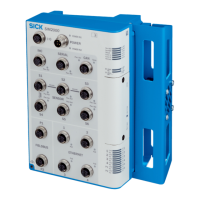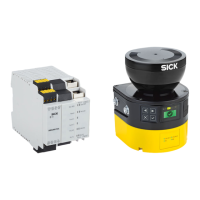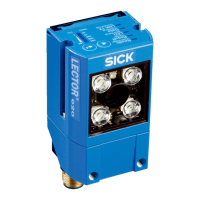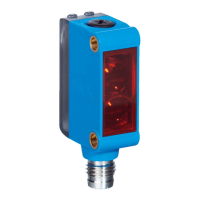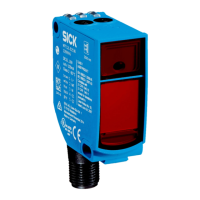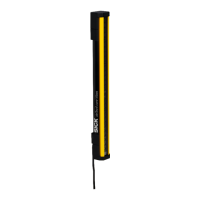Where:
•
K
L
= e
xtent of the contour detection field along the floor in millimeters (mm)
•
S
A
= stopping distance, in millimeters (mm)
•
Z
B
= supplement for the decreasing braking force of the vehicle, from the vehicle
documentation, in millimeters (mm)
•
Z
O
= size of the selected object resolution in SafetyDesigner in millimeters (mm):
400mm for a small opening or 1,000mm for a large opening
Further topics
•
"St
opping distance S
A
", page 36
4.3.14.3 Calculation example for the width of the contour detection field
Calculation example for the width of contour detection field K
B
K
B
= F
B
+ 2 × T
Z
Where:
•
K
B
= width of the contour detection field in millimeters (mm)
•
F
B
= vehicle width, in millimeters (mm)
•
TZ = tolerance zone of the device
Complementary information
If onl
y part of the opening protrudes into the vehicle travel path from the side, this
design of the width may result in the opening not being detected. The vehicle could
drive into the opening and crash to the side. To prevent this, a lateral supplement
corresponding to the configured object resolution (gap size) may need to be added to
the contour detection field.
4.4 Integrating the equipment into the electrical control
Requirements for use
•
T
he control of the machine can be electrically influenced.
•
The connected controller and all devices responsible for safety comply with the
required performance level and the required category (for example according to
ISO13849-1).
•
Power is supplied to all electrically connected devices in accordance with SELV/
PELV (IEC60204-1).
•
All devices connected to a local input or output are in the same SELV/PELV circuit
as the product.
•
All electrically connected devices use the same earthing method.
•
All earthing points are connected with the same ground potential.
Further topics
•
"E
lectrical installation", page 53
4.4.1 Electromagnetic compatibility
Overview
S
afety components switch all safety outputs to the OFF state in the event of errors in
order to rule out potentially dangerous situations. For example, faulty data transmission
must lead to a shutdown for safety-related devices, even if it can be tolerated for
non-safety-related devices.
PROJECT PLANNING 4
8025919/1I9E/2023-01-09 | SICK O P E R A T I N G I N S T R U C T I O N S | safeVisionary2
39
Subject to change without notice
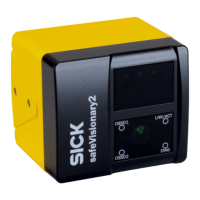
